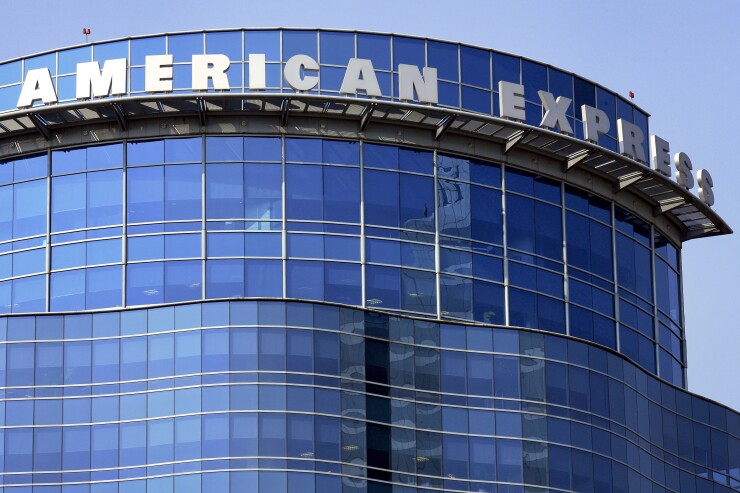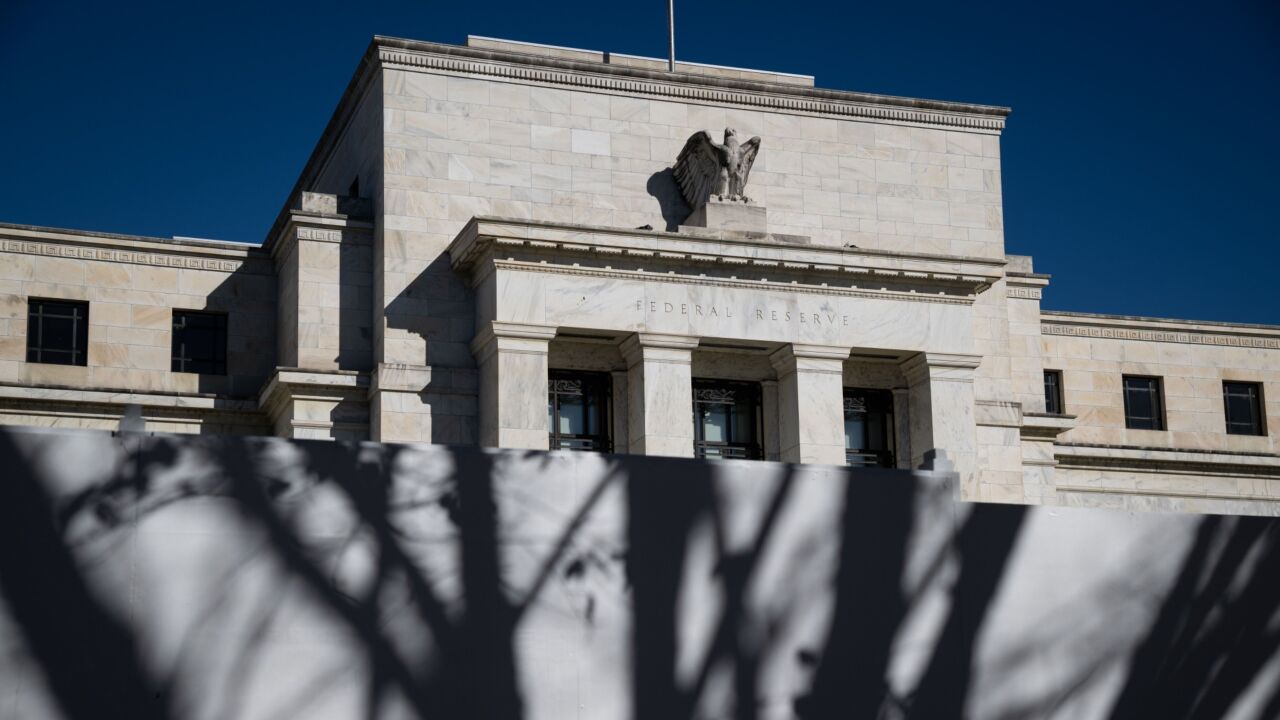When American Express debuted its Bluebird prepaid card in Walmart stores nearly five years ago, it was a sharp detour from the card brand's status as a product for the elite. But rather than bridge these two worlds, the Bluebird card has kept its market walled off.
For the most part, American Express has fared well with the Bluebird program, considering it entered a crowded prepaid card field – both within the industry and within Walmart itself, with various other prepaid products sold at the stores, said Ben Jackson, a senior analyst at Mercator Advisory Group.
However, it may not have delivered what Amex was hoping for early in the launch, Jackson said. "Based on the fact they haven't talked about it much, prepaid has not led to new credit customers like they had hoped," he added. "When they launched, they said if they liked the prepaid customers and their spending patterns, they would offer credit cards."

But if Amex can expand the market for Bluebird, it may bring it closer to its traditional audience. Overall, Bluebird has been a strong engine for growth at American Express, and it mirrors some of the PayPal models in that it operates as an alternative to banks by offering ATM access, direct deposit, check writing and other features.
The recent addition of a Bluebird2Walmart money transfer option represents another step for Bluebird, said Stefan Happ, executive vice president and general manager of global prepaid and alternative payments at American Express.
The service ties into Ria's Walmart2Walmart money transfer network, which allows customers to send funds to be picked up at another Walmart location within the U.S. "Our work with Walmart and Ria links Bluebird and Serve to the broader Walmart2Walmart universe," Happ said.
Bluebird also launched Cash Pickup powered through Ria earlier this year, allowing cardholders easier access to cash beyond traditional ATM limits and enabling a "high-dollar, funds-off route for tax refund deposits," Happ added.
As much as anything, American Express is responding to customer demand. "We saw an opportunity to provide an affordable, easy-to-use Bluebird money transfer offering," Happ said.
Most of the recent news regarding American Express has focused on the loss of the
Still, despite early boasts of Bluebird's success, it has become difficult over time to pinpoint exactly what the Bluebird portfolio looks like, and American Express declined to share current numbers.
Over time, Amex may have concluded that the consumers who would be inclined to get an American Express card already had them, Mercator's Jackson said.
"With Bluebird, you have to remember that the marketing message around it was not targeting the bottom of the market," Jackson added. "It was more like being a good companion to your bank account or your other ways of spending."
That's how prepaid cards are likely to position themselves in the future, he added. "A lot of companies are going to look to offer prepaid cards to the budget-conscious and security-conscious consumers."
In many ways, the Bluebird prepaid program and its move to a digital money transfer feature continues to fulfill the dreams of Dan Schulman, its former group president of enterprise growth, who helped create the program through Amex's Serve prepaid platform in October of 2012.
Even before taking the same philosophy to his job as
"Dan Schulman has always been interested in providing financial services to the underbanked and unbanked," said Richard Oglesby, president of AZ Payments Group and a senior analyst at Double Diamond Payments Research. "He did it with the Serve platform at American Express, starting it as a digital wallet solution, and transformed it into the platform behind Bluebird."
For American Express in today's market, the prepaid options delivered through Serve complement the company's OptBlue program, introduced three years ago and designed to acquire more small merchants into the Amex fold.
American Express has somehow been able to avoid the fate of some companies from the past that made the move from the perception of "elite" to something more "common" for consumers and failed, said merchant acquirer consultant and industry researcher Paul Martaus of Martaus & Associates.
"People don't seem to be threatened by American Express going out and trying to attract a more downscale market," Martaus said. "Years ago, when companies like car manufacturer Packard did that, the rich people left hand over fist because their egos couldn't handle not having something considered elite."
American Express' reputation for customer service also goes a long way in carrying the company through any other bumps in the road, Martaus added.
As for merchant adoption, many will realize through simple math that they should be accepting American Express transactions, whether they are introduced to OptBlue or not, Martaus said.
"I tell my merchant clients to take three months worth of statements, look at the bottom line amount on what they are paying the bank for credit cards, then divide that by the volume to truly determine their discount rate," Martaus said. "After that, they start taking American Express cards, as they more clearly see how much they were paying on other cards without knowing it."
Merchants are picking up on that, but mostly through the OptBlue program.
American Express says in 2016 more than one million new U.S. merchant locations began accepting Amex transactions. Broken down further, more than 80,000 new merchant locations in New York began taking Amex, while 30,000 did so in Chicago and 24,000 in Boston. In the Dallas-Ft. Worth area, 31,000 new locations were added, and in San Francisco 26,000 new locations began taking Amex.
"This growth is happening in cities and communities all over the country, allowing our prepaid customers to use their card in many more places," Amex's Happ said.
In that regard, the American Express logo at the point of sale is starting to show up in far more places.
Of those new merchants added in the U.S., more than 100,000 were at restaurant locations; 58,000 were salon and spa businesses; more than 7,000 were at dry cleaners locations; more than 42,000 were clothing stores; and more than 18,000 were new home improvement businesses.





